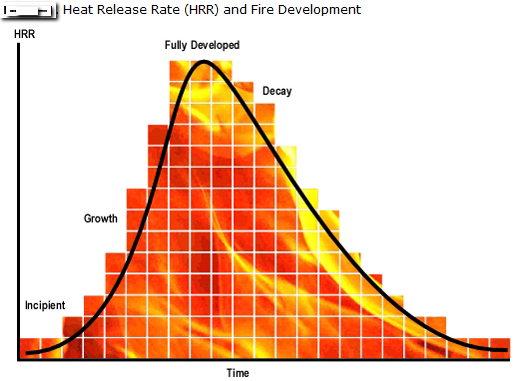Fire Monitoring
It is important to monitor and respond to changes in a fire. Changes include changes in wind direction, backdraft, ventilation, the release of hazardous substances, and radiation.
Wind direction: it is important to monitor the wind direction, as this will show you the direction the fire is burning towards. The wind blows flames in the direction it is blowing to.
Backdraft: If the wind is very strong and it is impossible to stop the fire by direct beating, back-burning may be considered as a last resort. Back-burning can be very dangerous. A backdraft is a new fire from the opposite direction to meet the fire that is already burning. It is very important to ensure that no one comes between the fire and the backdraft. This applies to fires on grass and vegetation e.g. when you are clearing for construction.
Ventilation: it is advisable to close windows and any other ventilation channels that bring in the air as air holds oxygen that will fuel the fire. Closing ventilation deprives the fire of oxygen making firefighting easier as the fire is ‘choked”.
Release of hazardous substances: as fire burns, it releases substances that are hazardous. These are mainly gases such as carbon monoxide, hydrogen cyanide and carbon dioxide which will cause firefighters to inhale more thus, in turn, inhaling more hazardous substances.
Stages of a Fire
There are 4 stages of a fire. These stages are incipient, growth, fully developed, and decay.

The following is a brief overview of each stage.
Incipient/Ignition: This first stage begins when heat, oxygen and a fuel source combine and have a chemical reaction resulting in fire. This is usually represented by a very small fire which often goes out on its own. Recognising a fire in this stage provides your best chance at containing/extinguishing it.
Growth: The growth stage is where the structures fire load and oxygen are used as fuel for the fire. There are numerous factors affecting the growth stage including where the fire started, what combustibles are near it, ceiling height and the potential for “thermal layering”. It is during this shortest of the 4 stages when a deadly “flashover” can occur; potentially trapping, injuring or killing firefighters.
Fully Developed: When the growth stage has reached its maximum and all combustible materials have been ignited, a fire is considered fully developed. This is the hottest phase of a fire and the most dangerous for anybody trapped within.
Decay: Usually the longest stage of a fire, the decay stage is characterized by a significant decrease in oxygen or fuel, putting an end to the fire. Two common dangers during this stage are first – the existence of non-flaming combustibles, which can potentially start a new fire if not fully extinguished. Secondly, there is the danger of a backdraft when oxygen is reintroduced to a volatile, confined space.
Click here to view a video that explains the stages of a fire.